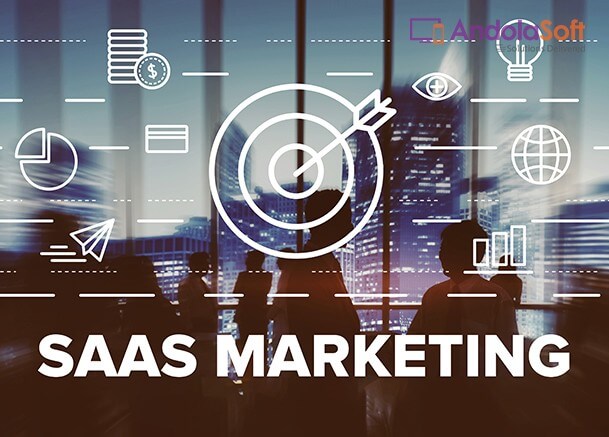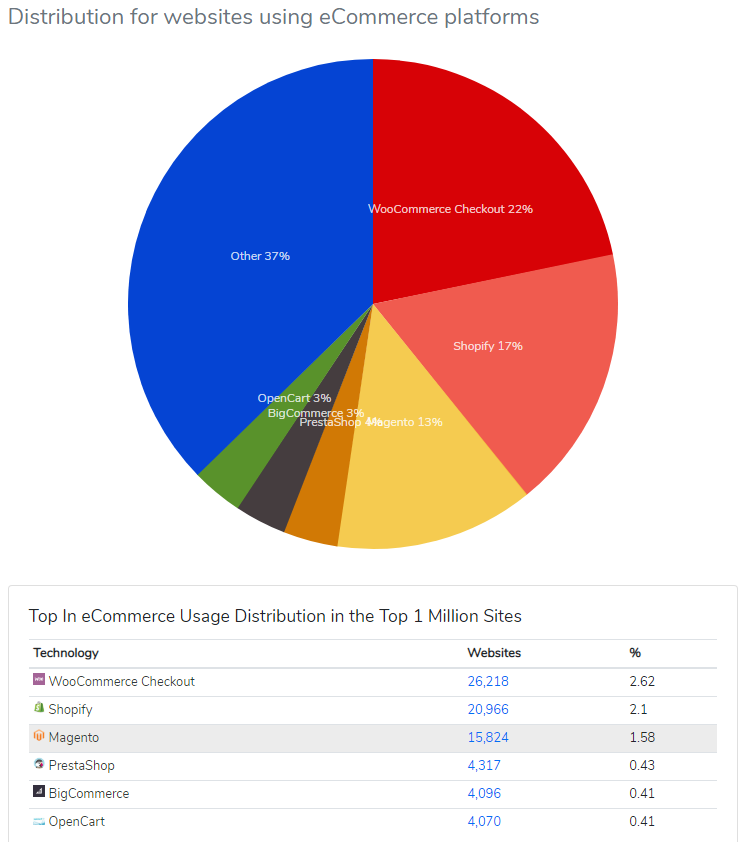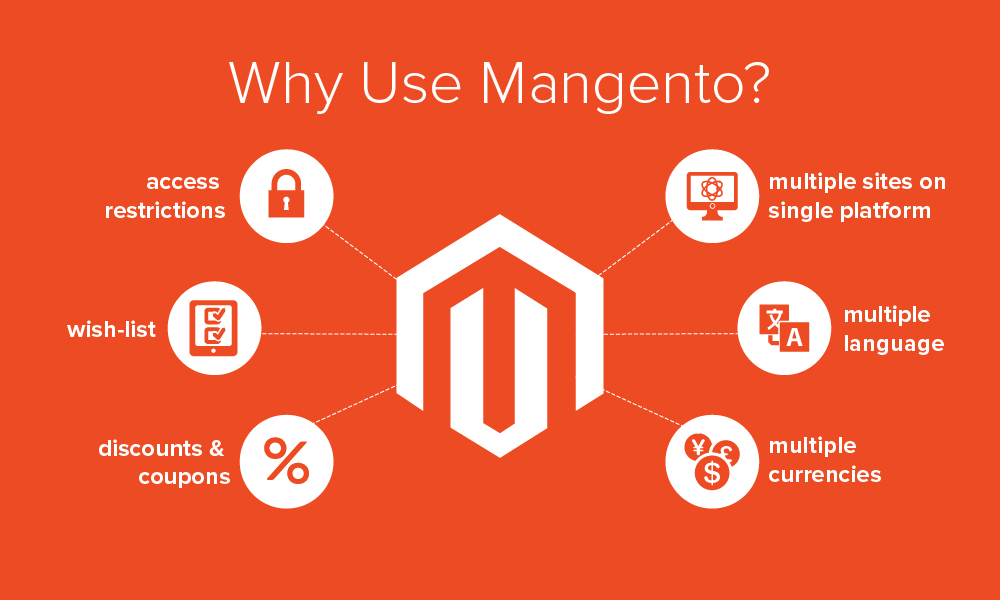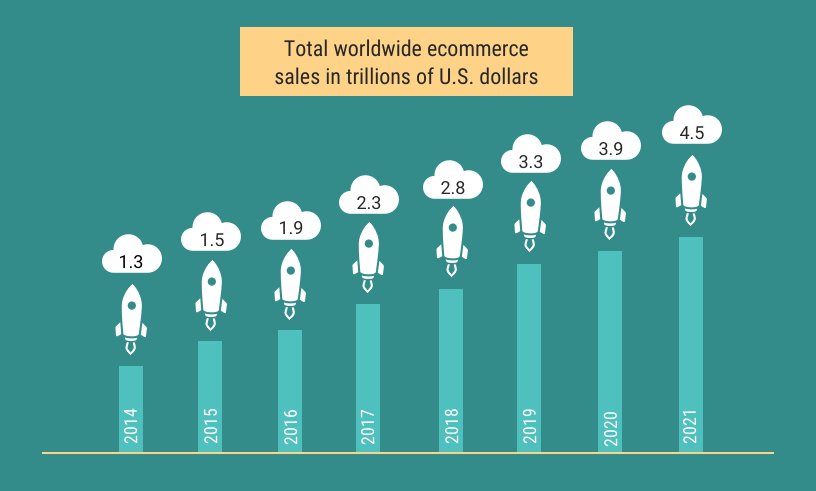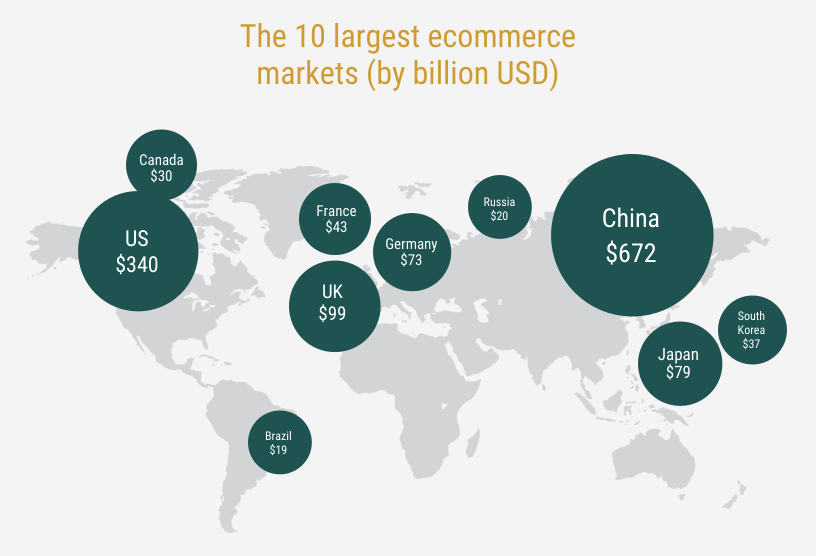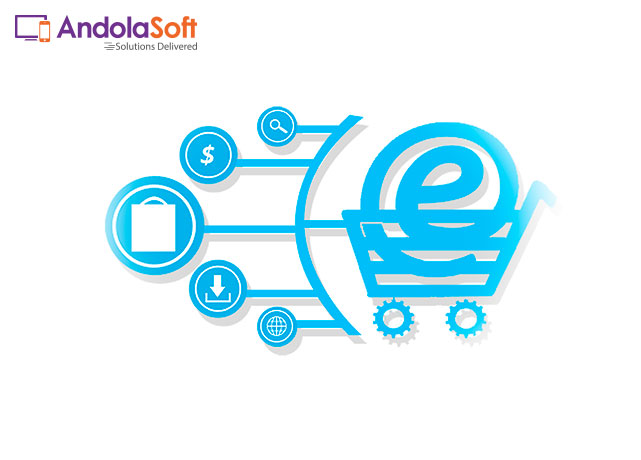Amazon celebrated its birthday on July 5, 2017. The conglomerate already commands 37 per cent of the eCommerce market according to recent projections. And will be responsible for half of all the online sales within 3 years.
Taking these numbers into consideration, it’s easy to forget that both Amazon and eCommerce are still in their infancy in the grand scheme of things.
In spite of the futuristic advances such as the new drone service and 2-hour delivery, success in the long run starts with an understanding of the potential points of friction and fundamental market opportunities.
What does the future of eCommerce hold for 2018 and beyond? The answer is in the following trends:
eCommerce is enjoying growth, but represents just 9.1% of retail sales
The market share of eCommerce in Q3 2017 expressed as a percentage of the overall retail sales has grown to 9.1% according to the U.S. census bureau, which is up from 3.5% just one decade ago.
However, brick and mortar businesses are still dominant, and by a huge margin. The quick growth coupled with a low market share means that the opportunity still exists for new players to outpace the leaders in the industry.
High-growth businesses should find ways to enjoy success in business and life. Companies that wish to capitalize on this trend also need to focus on optimizing the in-store experiences for customers in conjunction with the eCommerce expressions.
B2B eCommerce dwarfs B2C eCommerce by more than $2 Trillion
You might not have already made an investment in your own eCommerce wholesale channel, but you have probably considered it. The B2B eCommerce numbers speak for themselves after all. Statista estimates that the gross merchandise volume of B2B eCommerce transactions in 2017 is projected to equal $7.66 trillion up from 2013’s $5.83 trillion.
The difference in growth is almost equal to the whole amount of projected transactions in business-to-consumer transactions in 2017 at $2.143. The average conversion rate of business-to-business survey respondents was 10%, which is more than 3 times higher than the 3 percent average that B2C eCommerce executives reported.
The opportunity naturally comes with its own challenges. All B2B eCommerce buyers are also potential B2C eCommerce shoppers. Having shopped at Amazon, they are also likely to be conditioned to desire a similar experience i.e. streamlined, direct, and fast operations without any resistance between search and checkout. They are likely to prefer buying at the website and not via a sales representative.
It is mandatory to experiment with self-service B2B eCommerce.
eCommerce Automation is an Attainable Reality for Businesses
Would you tell anybody if your business had a secret formula to reducing costs, saving time, and selling more? Marketing automation was that secret a decade ago. Enterprises such as Costco, Walmart, and Amazon, which had resources for research and development on a large scale leveraged its power to build empires.
Automation is an emerging new secret for the future of eCommerce. For starters, no eCommerce platform offers comprehensive automation as an accessible feature. Firms that are automating have either created custom in-house processes at a great financial cost, or assembled mix-and-match workarounds using third-party applications.
No platform has unleashed eCommerce automation until now:
1. Shopify Scripts
With Shopify Scripts, you can add relevant payment options, automatic discounts, and specialized shipping options to ensure that each customer has a customized checkout experience. Scripts provide enhanced control over the customer’s cart and helps optimize closest to the money.
2. Launch pad
Launchpad acts as the command center for major commerce events such as special celebrations, product releases, and flash sales. Schedule everything on the to-do list long before the arrival of big days and take the heavy-lifting and guesswork out of driving revenue to the store.
3. Shopify Flow
Shopify Flow refers to a 3-step visual builder that makes automation for any back-office or customer-facing process that you can imagine possible. By specifying actions, conditions, and triggers, you can create your own processes or even download and then install a growing number of per-made workflows without the need to code.
The biggest Challenge for eCommerce is Fragmentation
The accessibility of digital has made it possible for consumers to enjoy access to increased buying opportunities than previously. Phones now provide users with immediate access to numerous retailers. For the big-ticket items, it means an exponential increase i.e. touch points.
The lower-cost products hardly ever takes 3 months of research, but just about all the online buyers currently follow the same, meandering path. If you are a large company, this can scare you since niche boutiques are uniquely positioned to enjoy increased market share. If you are a smaller company, the lower barriers to market entry and growth will excite you.
Irrespective of where you sit on the fence between a dominant player in the industry and a startup, there is always an opportunity to win as well as an opportunity to lose.
International eCommerce is Still Mostly Untapped
1.4 billion People are likely to join the middle class in the world by 2020 according to McKinsey.
85 of these people will be in the Asia Pacific region. Retailers that enter this space early enough are likely to gain competitive advantage when it comes to meeting market demand.
For example, the William Wrigley Jr. Company, which is a leading manufacturer of chewing gum, has already gained 40% market share in China. eCommerce as a whole is actually likely to shift away from the West too in the future.
Why?
Every country introduces a new set of market preferences, constraints, and security challenges. Take a country such as a Nigeria for example, where U.S. eCommerce products might be in high demand but fulfilling this demand is highly risky.
You shouldn’t just avoid these global opportunities. A better idea would be to find a trusted partner and creative workaround. For example, Mall for Africa is a service that helps UK and US eCommerce companies reduce the stress and risk associated with selling into Africa because of fraud.
The company has managed to create distribution points in key locations to make sure that goods can be accessed even in somewhat remote locations and depends on rigorous and multi-level security systems to protect data and identities and even identify any unusual purchases.
The company has helped lower the risk and allowed brands such as Ralph Lauren, Abercrombie & Fitch, Brooks Brothers, and J. Crew entry into African markets where they are in high demand.
Double down on the global eCommerce markets and ensure that infrastructure such as the international warehouses and global fulfillment partner is ready to handle it.
Mobile might be the norm now, but it adds complexities to purchases
You have probably witnessed mobile traffic outpacing or at least coming close to your desktop traffic levels in the past year. In the most recent Black Friday and Cyber Monday saw Shopify, mobile sales accounted for 59.6% of overall number of orders and 64% of the Black Friday sales specifically, which represents a growth of 10 percent year-over-year.
Native social selling is finally producing results
Selling directly on social media might still be in its experimental stage, but the results are in!
Instagram will have more than 1 billion monthly active users by the time you read this. Flurry estimates that the average adult spends about 5 hours daily on their devices and over half the time is spent on messaging, social, entertainment and media applications.
A good percentage of them are translating into sales with about 18.2% of respondents to the September 2016 survey reporting to have purchased products via social media directly. More are likely to buy in the future because the early adopters help vet and validate the experience.
MVMT Watches has already enjoyed some success with social selling. The brand generated $15,000 in revenue and 1,500 people visited their Facebook in a week. The brand director of brand and retention marketing, Blake Pinsker says that the brand’s mobile conversion rate was more than double once people became comfortable with the idea of buying from their phones. Blake says that the brand believes that its growth on its Facebook shop is almost the same as people familiarize themselves with the platform.
The Holy Grail of eCommerce engagement is content
Great content is helpful, educational, and entertaining. It is cost-effective and impact to ROI as a marketing strategy. It is the reason why 78% of CMOs believe custom content is the future of marketing. In addition, brands that depend on content usually save more than $14 on every customer you acquire.
Hypothetically, content is something companies can create as soon as the next day. Creating a product guide or launching a blog requires minimal resources. However, it is important to be strategic and thoughtful about your approach: the attention spans of consumers are spread thin and audiences have high-quality standards when it comes to what they read, watch, and interact with.
Some Final Words…
It is no longer “business as usual.” eCommerce leaders now have a world of opportunity to evolve and adapt, with success emanating from a series of small steps.
Except the web and mobile app development, Andolasoft has its own shopping cart (JuggernautCart) with digital products and serving others in building their own shopping carts. JuggernautCart is the most affordable shopping cart to sell your digital products or assets like eBooks, add-ons, podcasts, images, videos and many more and you can customize and use these according to your need.
Are you looking to build your own Shopping Cart! Consult Now

